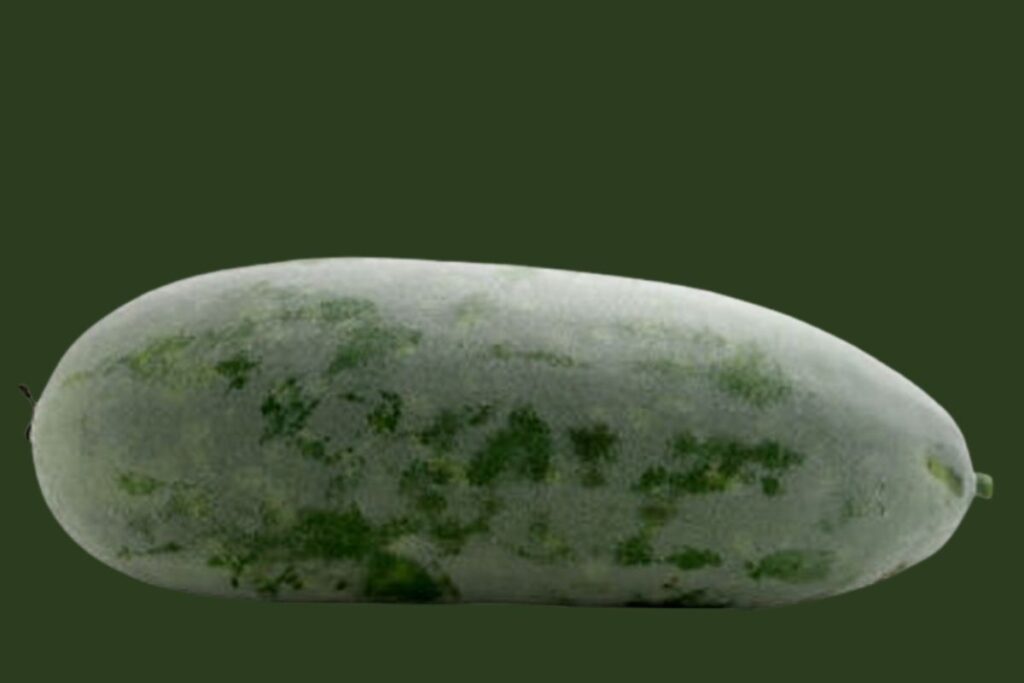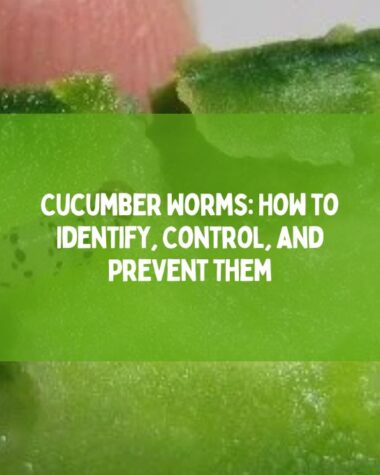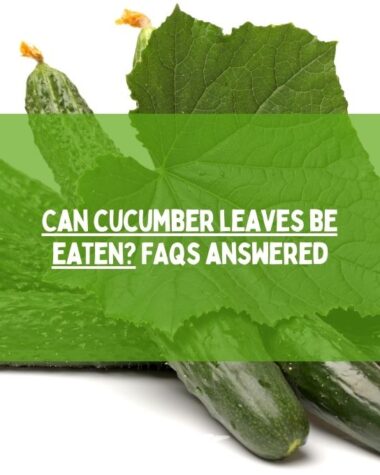Many people enjoy cucumbers as a cool snack or a crunchy addition to salads. However, have you ever wondered why cucumbers often have a shiny appearance? The answer lies in the waxy coating applied to them unless they are organic.
In this article, we will delve into the reasons behind the presence of wax on cucumbers and explore its effects on our health. So let’s peel back the layers and uncover the truth about why cucumbers have wax on them.
Cucumbers Natural Wax Coating
Cucumbers naturally produce a thin layer of wax on their skin, even without any additional waxing. The cucumber benefits from this natural wax’s protective barrier, which stops moisture loss and guards it against potential environmental harm.
The waxy texture we feel when touching a cucumber is primarily due to this natural wax layer.
What is the Purpose of Wax on Cucumbers?

Have you ever wondered why cucumbers have a shiny, waxy coating? The purpose of wax on cucumbers goes beyond aesthetics. In this section, we will explore the reasons behind the application of wax on cucumbers and how it serves to protect and preserve these crisp and refreshing vegetables.
Creating a Shiny Appearance
One of the primary reasons cucumbers are coated with wax is to enhance their visual appeal. The waxy layer gives cucumbers a glossy shine, making them look fresh and enticing. This aesthetic enhancement is particularly important for commercial purposes, as it attracts consumers and increases their chances of purchasing.
Extending Shelf Life
The application of wax to cucumbers also serves a practical purpose. The wax acts as a protective layer, helping to extend the shelf life of the vegetable.
By creating a barrier between the cucumber and its environment, the wax helps reduce moisture loss and prevents the entry of bacteria and fungi, thus preserving the cucumber’s freshness for a longer duration.
Facilitating Transportation
Cucumbers are often transported over long distances before reaching our local grocery stores.
The waxy coating helps minimize damage during transit by providing an extra layer of protection against physical abrasions and handling. This ensures that cucumbers arrive at their destination in a presentable condition.
Is the Wax on Cucumbers Safe to Eat?

When it comes to consuming cucumbers, you may have questioned whether the wax coating applied to them is safe to eat. In this section, we will delve into the safety aspect of the wax on cucumbers and shed light on its edible nature.
Discover the facts behind the wax coating and gain a better understanding of its impact on your health when enjoying these crunchy and hydrating vegetables.
Edible and Non-Toxic
The wax applied to cucumbers is generally considered safe for consumption. It is made from natural food-grade ingredients, such as beeswax or shellac, which are deemed non-toxic. Therefore, there is no need to worry about potential harm when consuming wax-coated cucumbers.
Remove the Peels, If Desired
Despite its safety, some individuals prefer to remove the wax and cucumber peel before consumption. This could be due to personal preference, concerns about potential pesticide residue, or simply a desire to consume a more natural product.
If you fall into this category, it is recommended to purchase organic cucumbers, as they are not coated with wax. Organic cucumbers are grown without the use of synthetic pesticides and are therefore a suitable alternative for those who prefer to avoid wax.
Related Reading:
- Cucumber on Eyes: Benefits, Side Effects, and How to Use It
- Can Cucumbers Reduce Belly Fat? A Refreshing Approach to Weight Loss
- Why Can’t We Eat Cucumber at Night?
- Unveiling the Mystery: Which Part of Cucumber Do We Eat?
- Why Cats Are Afraid of Cucumbers? The Surprising Truth Revealed!
Types of Wax Used on Cucumbers
The waxy coating applied to cucumbers can originate from various sources, each serving the purpose of enhancing the vegetable’s appearance and prolonging its shelf life.
Let’s take a closer look at the two main types of wax commonly used on cucumbers: food-grade synthetic waxes and natural waxes.
Food-Grade Synthetic Waxes
Food-grade synthetic waxes are commonly used in the food industry for their desirable properties and safety. One such wax often used on cucumbers is shellac. Shellac is a resin secreted by the female lac bug, which is then processed into a wax-like substance.
It is a popular choice for coating fruits and vegetables due to its ability to provide a glossy finish and a protective barrier.
The U.S. Food and Drug Administration (FDA), among other food safety authorities, has given shellac its approval for use in food products. It is considered safe for consumption as long as it meets specific purity standards.
The use of food-grade synthetic waxes on cucumbers ensures that the wax coating is non-toxic and poses no harm to human health.
Natural Waxes
Natural waxes, such as beeswax, are another type of wax used on cucumbers. Honeybees produce beeswax, which is well-known for its adaptability and natural qualities. It is a popular choice for organic or naturally-derived waxes used in food applications.
Beeswax offers a protective coating to cucumbers, helping to retain moisture and prevent spoilage. It is considered safe for consumption and is widely accepted in the food industry.
However, it is important to note that the use of natural waxes, including beeswax, is not exclusive to all commercially available cucumbers. It is more commonly found in organic or specialty varieties.
Whether food-grade synthetic waxes or natural waxes are used on cucumbers, they must adhere to stringent safety regulations and meet specific purity standards. This ensures that the wax coating applied to cucumbers remains edible and poses no health risks to consumers.
Washing and Removing Wax from Cucumbers

If you find the waxy texture of cucumbers undesirable and prefer a smoother eating experience, it’s important to know that simply washing them with water is unlikely to completely remove the wax coating. However, there are a few steps you can take to enjoy cucumbers without their waxy texture.
Peeling the Cucumber
One effective method to remove the wax coating and achieve a smoother texture is to peel the cucumber. Using a vegetable peeler or a sharp knife, carefully remove the outer layer of the cucumber, along with the wax.
By peeling the cucumber, you not only eliminate the waxy sensation but also reduce any potential exposure to pesticide residues that may be present on the skin.
It’s worth noting that peeling the cucumber will also result in a loss of nutrients and dietary fiber present in the skin. However, cucumbers are still a good source of hydration and other essential nutrients, even when peeled.
Opting for Organic Cucumbers
Another alternative for enjoying cucumbers without the waxy texture is to choose organic varieties. Organic cucumbers are grown without the use of synthetic pesticides, fertilizers, and wax coatings. As a result, they have naturally smooth and unwaxed skin, making them a suitable option for those who prefer a more natural cucumber-eating experience.
Organic cucumbers are typically labeled as such in grocery stores or farmers’ markets, allowing you to easily identify them. By selecting organic cucumbers, you can enjoy their crispness and freshness without any added wax or synthetic chemicals.
Homemade Vinegar Soak
If you prefer not to peel the cucumber or have difficulty finding organic options, you can try a homemade vinegar soak. This method involves soaking the cucumbers in a mixture of water and vinegar for about 15-20 minutes. The acidity of the vinegar helps to break down and remove some of the wax coating.
To prepare the vinegar soak, mix equal parts of water and vinegar in a bowl or basin. Submerge the cucumbers in the mixture and gently agitate them to ensure all surfaces come into contact with the solution. After the soaking period, rinse the cucumbers with clean water to remove any remaining vinegar residue.
While the vinegar soak may not eliminate the wax, it can help reduce its presence and provide a smoother texture.
Conclusion
In summary, the waxy coating found on cucumbers serves both aesthetic and practical purposes. It enhances their visual appeal, prolongs their shelf life, and protects them during transportation.
While the wax is considered safe to eat, some individuals prefer to remove it along with the cucumber peel. Opting for organic cucumbers provides a wax-free alternative for those who prefer a more natural option.
So, the next time you reach for a cucumber, remember the role of wax in its appearance and preservation. Enjoy your crunchy and refreshing snack, with or without the wax!
Related Reading:
- A Comprehensive Guide to the Different Types of Evergreen Trees
- How to Peel a Tomato: Why Should You Peel Tomatoes?
- Unleashing Joy: Exploring the Delightful World of Jolly Pumpkins
- From Garden to Danger: Exploring the Causes of Poisonous Zucchini
- Difference Between Red Carrots and Orange Carrots
- Yellow Spots on Eggplant Leaves: Why Are My Eggplant Leaves Turning Yellow?
FAQs About Wax on Cucumbers
Here are some faqs about wax on cucumber.
Why do cucumbers have wax on them?
Unless they are organic, cucumbers are coated with wax to enhance their appearance, extend shelf life, and facilitate transportation.
Is the wax on cucumbers safe to eat?
Yes, the wax applied to cucumbers is generally considered safe and is made from edible, non-toxic ingredients.
Can I remove the wax and peel from the cucumbers?
Absolutely! If you prefer to consume cucumbers without the wax coating and peel, you can choose organic cucumbers that are free from wax.
Are organic cucumbers a better option?
Organic cucumbers are grown without the use of synthetic pesticides and are not coated with wax, making them a suitable choice for those who prefer a more natural option.
Does washing remove the wax from cucumbers?
Washing cucumbers with water alone is unlikely to remove all the wax. If you prefer to remove the wax, it is best to peel the cucumber or choose organic ones.
Can I use waxed cucumbers for pickling?
Yes, you can use waxed cucumbers for pickling. However, if you wish to avoid wax altogether, it is recommended to select organic cucumbers for the best results.







